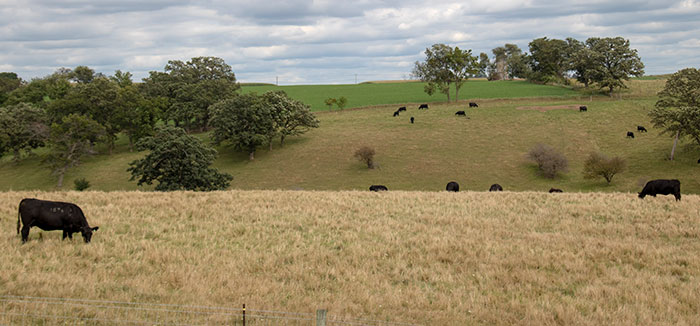Spring grass is both a blessing and a curse |
| By Hay and Forage Grower |
|
|
 Whether you have a quarter acre lawn or 1,000 acres of pasture, the landscape’s spring green up never gets old regardless of how many times you’ve seen it. It’s as though God is offering his personal blessing for enduring months of donning long underwear. After all, suffering and forgiveness are primary biblical themes. For the livestock producer whose livelihood will depend on grass growth over these next many months, the spring greening ritual has special significance. The battles with snow, mud, cold, and feeding are over. It’s time to open the gate . . . or is it? “Pasture forage will benefit this spring from delayed grazing,” says Jeff Lehmkuhler, extension beef specialist with the University of Kentucky (UK). “Much of the early growth will be supported by plant energy stores until sufficient leaf area has developed for photosynthesis. Continually removing this new growth could further weaken stands or slow spring forage growth,” he adds in UK’s Off the Hoof newsletter. Eric Mousel, University of Minnesota extension beef specialist, agrees. “Research has shown grazing grass species prior to the four-leaf stage will reduce season-long yields as much as 30 percent,” Mousel says. “Over the long term, the benefit of feeding cows to keep them off grass until it is ready will outweigh the cost of reduced grazing capacity. Frequently moving cattle will also be beneficial to both cattle and grass. Giving grass some time to rest, especially as summer approaches, will increase grazing capacity and utilization of grass resources,” he adds in a recent edition of the Midwest Forage Association’s Forage Focus magazine. Weakening pasture stands that will cost you throughout the summer is one thing, but the specialists note that there are also nutritional factors to consider. It’s wet stuff “Early spring growth can be upwards of 90 percent moisture,” Lehmkuhler says. “A cow requiring 30 pounds of dry matter intake would have to consume 300 pounds of actual grass due to the high-water content. Short and thin forage stands require cattle to expend a lot of energy walking fields for every blade of green grass to fill the rumen.” The Kentucky beef specialist points out that grazing is a high-energy activity, and that’s especially true for spring grazing. Some studies have shown that spring grazing requires twice the energy as summer grazing because of lower forage availability and less forage consumed per bite. Mousel says that supplementing cows for energy and/or dry matter may be needed in early spring. The supplementation decision needs to be based on cow condition in relation to the breeding season. Nutritionally balanced cows, in good condition, can go into the grazing season and have no problem maintaining condition and cycling during the breeding season. Unfortunately, that is not always the situation. “Hoping thin cows gain enough weight on spring grass to cycle normally during the breeding season is not an effective practice,” Mousel says. It is not always a guarantee cows will gain weight rapidly on very lush spring grass. Thin cows going onto spring grass can have an extremely adverse effect on conception rates,” he cautions. In one University of Minnesota study, thin cows turned out on spring grass and supplemented with 3 pounds per head per day of dry distillers grains had similar conception rates to adequately conditioned cows not supplemented. Conversely, thin cows turned out on grass and not supplemented had conception rates 12 percent lower than adequately conditioned cows on grass. Provide hay Supplementing high-quality hay simply to add more dry matter to the diet can also improve nutritional status, Mousel says. Lehmkuhler also recommends cows be offered some hay even when they’re out on grass in early spring. “The high moisture content of the grass can limit dry matter intake,” he says. “Cows will not eat much hay, but 5 pounds of dry hay intake is equivalent to approximately 40 pounds of lush pasture forage. Allowing access to hay can provide cows an opportunity to boost daily dry matter intake.” Early spring grass is tricky. How it is grazed can have a large impact on both cattle reproductive performance and future pasture productivity. Both beef specialists highly recommend some form of rotational grazing to allow for adequate regrowth. This will enhance grazing capacity and the utilization of pasture forage throughout the summer. |
